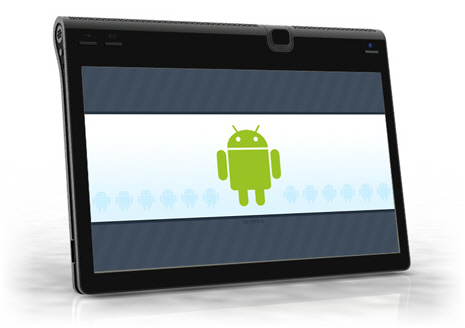How to build the perfect Android tablet, part 3: Market watch


#3: Full Google software suite including the Android Market
Many recently announced Android tablets come with an alternative application stores such as AppsLib, GetJar, SlideME, or AndAppStore. Alternate markets are good to have for applications that are not allowed, for one reason or another, on Google's mainstream Android capital-M Market. However, it's the Market that has 100K+ applications and it's the Market that is both the de facto and de jure center of the Android development universe.
For a one-time fee of $25, developers can get a publisher's account on the Market and upload their free or paid applications. The Market is fraught with problems, such as tons of spam, a stingy 325-character limit on descriptions, and a woefully lacking list of supported countries. Google has been ever-so-slowly improving the Market over the last couple of years, for example by adding the amazingly innovative ability to post screenshots (insert sarcasm here). The fact that it's flawed, though, doesn't change the crucially important role of the Market in the Android ecosystem.
As a developer, I want to submit my application to one place and have it reach all users. I can do that with the iPhone, so why not on Android? (Of course Apple brooks no alternatives on the iPhone, so it's not a fair comparison, but still there should be a default market that covers everyone.) Each additional place I have to publish is another place I have to make a publishing agreement with, keep up to date for each upgrade, and manage for marketing. More potential users with less friction for the developer equals more income and more interest in creating exciting games and applications.
Perhaps the greatest impediment to the universal Market is a somewhat nebulous list of restrictions and requirements that Google imposes which limits what types of devices can and can't have the Market and other Google apps. Some of the restrictions I can understand, like requiring an accelerometer. Others make no sense, such as the need to include a telephone (with its requisite expensive monthly fee). Google needs to change these rules ASAP or at least show some flexibility to accommodate devices (such as as the 5 announced this week from Archos) that aren't smartphones.
Along with the Market, the perfect tablet should have all the other parts of Google's Android suite, including GMail, Maps, Navigation, Search, and so forth. The apps should either be pre-installed or available for download through the Market. This does not preclude a vendor from using, say, Bing search and Yahoo Mail by default to differentiate their offering. But Google's suite is pretty good, and I ought to be able to use it if I want without having to search the fine print for the words, "with Google".
See all the articles in the "Perfect Android Tablet" series:
What would you build into *your* perfect Android tablet? Share your thoughts in the comment area below. And check back next week to find out what's next on my list.